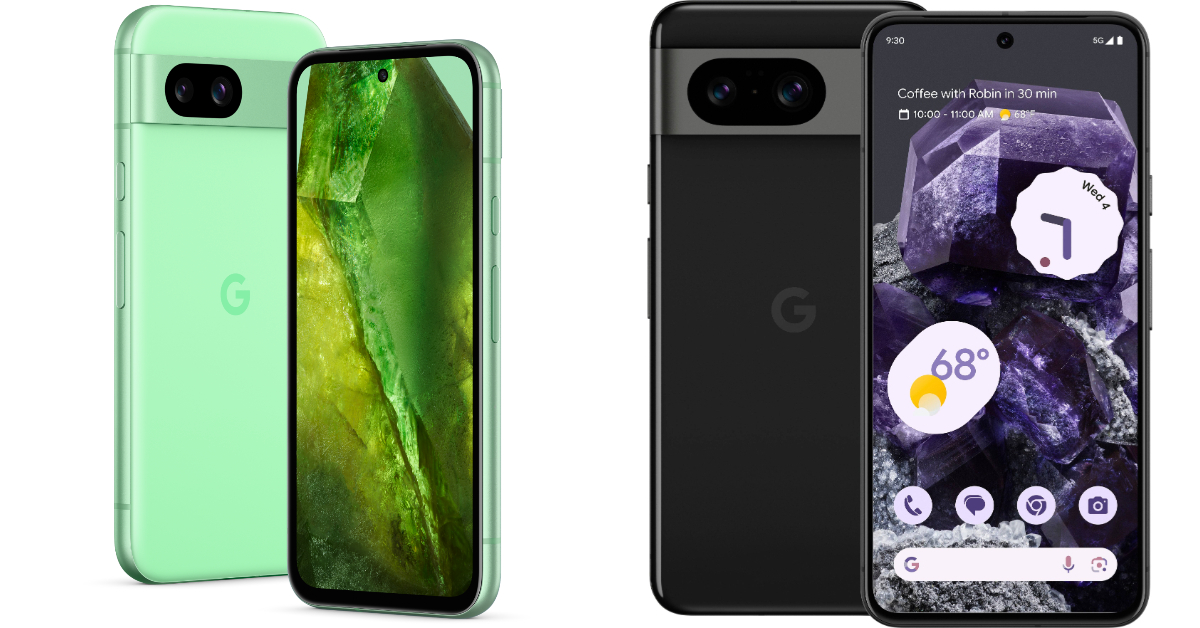Recently Google introduced its new A-Series phone, Pixel 8a in India. The smartphone and Pixel 8 have a lot in common, which is why they seem so similar. If you are confused, we have done a detailed comparison below between the Pixel 8a and its more expensive sibling Pixel 8 to help you understand which one is the better buy.
In This Article
Display
Pixel 8a: 6.1-inch Super Actua display (120Hz refresh rate)
Pixel 8: 6.2-inch FHD+ Actua display (Adaptive refresh rate ranging between 60Hz and 120Hz)
Processor
Pixel 8a: Google Tensor G3 chip
Pixel 8: Google Tensor G3 SoC
Rear camera(s)
Pixel 8a: Dual rear camera system with a 64-megapixel main lens and a 13-megapixel ultrawide lens
Pixel 8: 50MP Octa PD sensor with f/1.68 and 12 MP ultrawide camera with an auto-focus
Selfie camera
Pixel 8a: 13-megapixel sensor
Pixel 8: 10.5-megapixel Dual PD sensor
Also Read: Meta brings AI-powered image and text generation tools for businesses to create ad creatives
RAM and storage
Pixel 8a: 8GB RAM with 128GB storage/8GB RAM with 256GB storage
Pixel 8: 8GB RAM with 128GB storage/8GB RAM with 128GB storage
Battery
Pixel 8a: 4,492mAh battery
Pixel 8: 4,485mAh battery
Operating system
Pixel 8a: Android 14
Pixel 8: Android 14
Price
Pixel 8a: Rs 52,999
Pixel 8: Rs 75,999
Our Take
Both the Pixel phones are shipped with Android 14 out of the box and are promised to offer 7 years of software and security support. Though there is a slight size difference, the Super Actua displays on both devices support a 120Hz refresh rate. However, the display on the flagship Pixel 8 has an adaptive refresh rate that switches between 60Hz and 120Hz based on the content being played.
In addition, the display appears premium with thinner bezels than the 8a. The Pixel 8a boasts a display made of Corning Gorilla Glass 3. In contrast, the Corning Gorilla Glass Victus display of the Pixel 8 is stronger and less prone to scratches.
Also Read: Apple discontinued iPad (9th gen); iPad (10th gen) gets a price cut
Whereas the Pixel 8a is rated IP67, the Pixel 8 boasts IP68 dust and water resistance.
The Google Tensor G3 chip and Titan M2 security co-processor are the same processors found in the Pixel 8 and Pixel 8a. Both Google phones contain Pixel-only AI functions, although the 8a lacks some of the flagship phone’s capabilities. Over that, Magic Eraser, Photo Unblur, Real Tone, Face Unblur, Panorama, Manual White Balancing, Locked Folder, Night Sight, Top Shot, Portrait Mode, Portrait Light, Motion Auto Focus, Frequent Faces, Dual exposure controls, Live HDR+, and Ultra HDR are among the camera AI tools shared by both devices. Macro Focus, Best Take, and Magic Editor are absent on 8a.
In terms of cameras, the Pixel 8a’s front and back cameras have higher resolution sensors than the Pixel 8 PD sensor, but the latter’s larger sensor size allows it to capture more light, producing images that are clearer, crisper, and more detailed.
There isn’t much difference in the batteries, although the Pixel 8 has a slightly larger battery and features the Battery Share feature.
Apart from the cameras, build quality, and the absence of a few Pixel-only features, the Pixel 8a and Pixel 8 are nearly identical. However, the two have a significant price difference. If you’re on a limited budget, we advise you to choose the less costly Pixel 8a.



